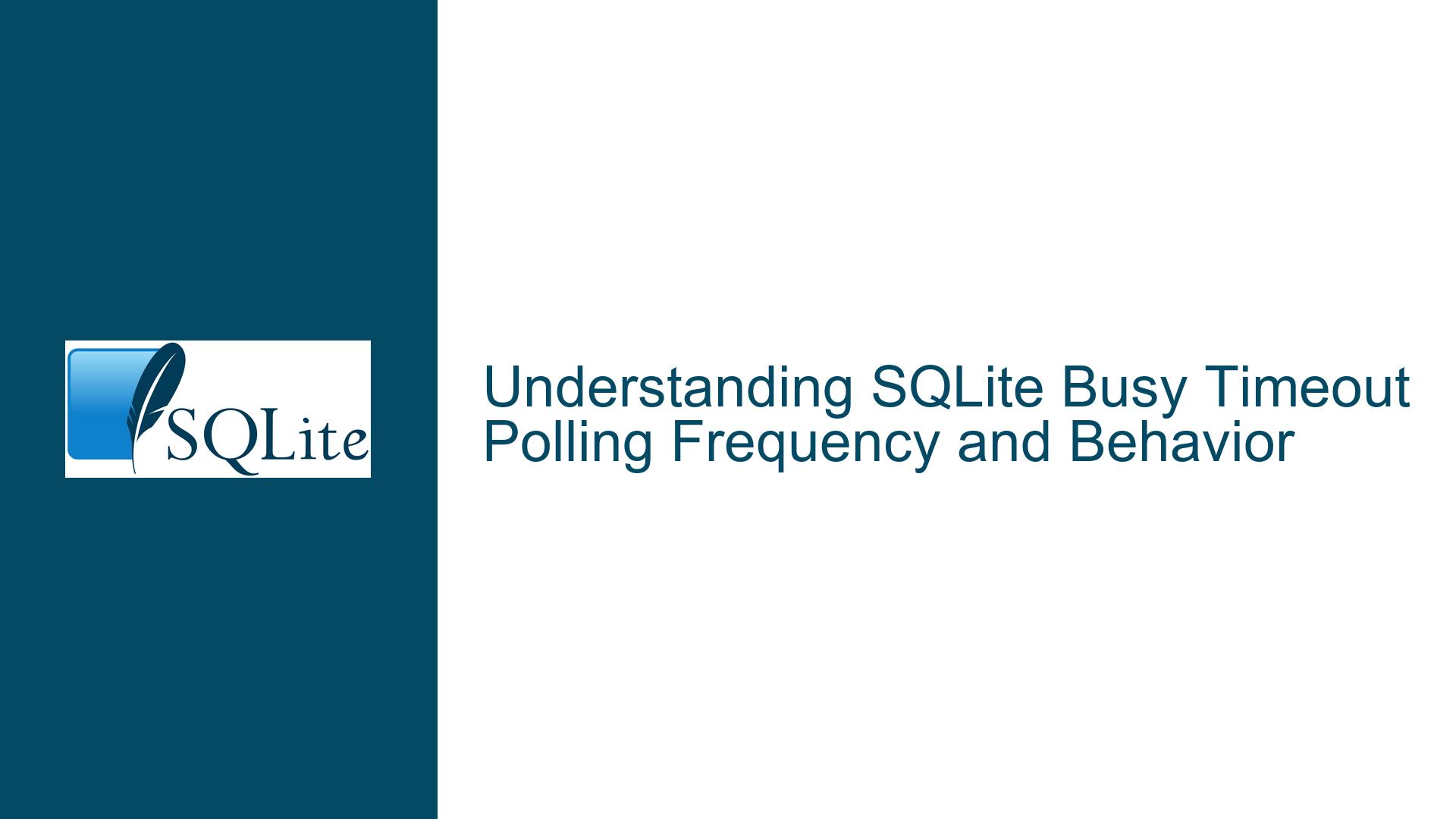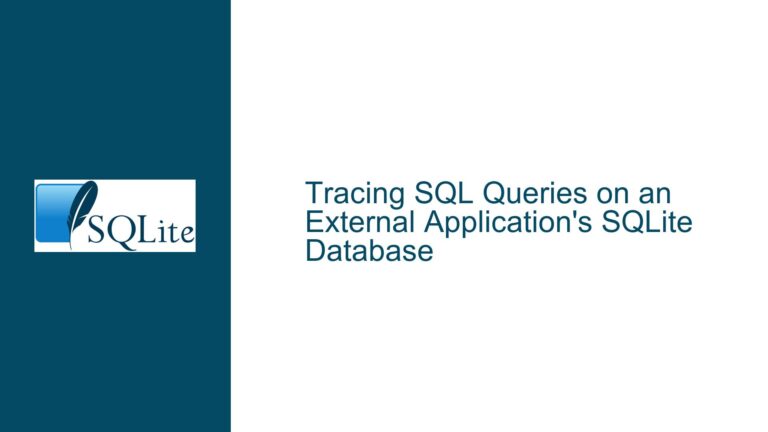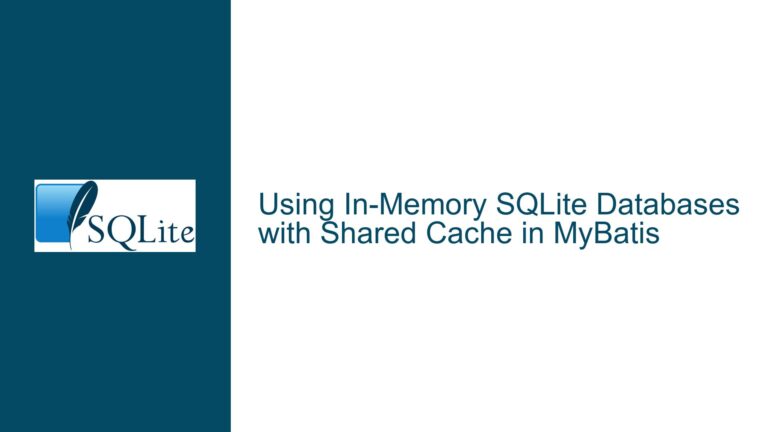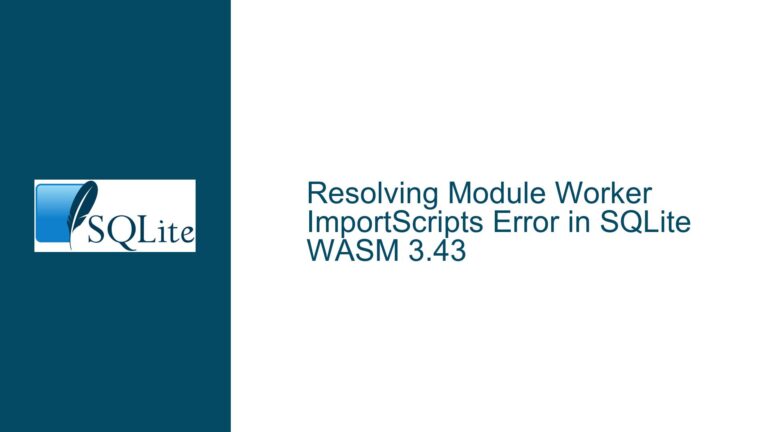SQLite Busy Timeout Polling Frequency and Behavior
SQLite Busy Timeout Polling Mechanism and Frequency
The SQLite database engine employs a busy timeout mechanism to handle situations where a database connection attempts to access a resource that is currently locked by another connection. This mechanism is crucial for managing concurrent access to the database, especially in multi-threaded or multi-process environments. The sqlite3_busy_timeout function is the primary interface for configuring this behavior. It allows developers to specify a maximum duration (in milliseconds) that a connection should wait for a lock to be released before returning a SQLITE_BUSY error.
The polling frequency of the busy timeout mechanism is not explicitly documented in the SQLite documentation, but it is determined by the internal implementation of the default busy handler callback. This callback is responsible for deciding how long the connection should wait between attempts to acquire the lock. The default behavior varies depending on the operating system and the capabilities of the underlying hardware. On systems that support sub-second sleeping (e.g., via usleep on Unix-like systems or equivalent mechanisms on Windows), the polling intervals are relatively short, starting at 1 millisecond and gradually increasing to 100 milliseconds. On systems without sub-second sleep support, the polling frequency is much lower, typically once per second or even less frequently, depending on the platform’s capabilities.
The busy timeout mechanism is designed to balance the need for responsiveness with the desire to avoid excessive CPU usage. By gradually increasing the polling intervals, SQLite ensures that the connection does not consume too much CPU time while waiting for the lock to be released. However, the actual polling frequency can be influenced by various factors, including the operating system’s scheduling behavior, the hardware’s timer resolution, and the presence of other processes competing for CPU time.
Interrupted Write Operations and Busy Handler Callbacks
The busy timeout mechanism is closely related to the concept of interrupted write operations. When a database connection attempts to write to a database file that is locked by another connection, the write operation is interrupted, and the connection enters a busy state. The busy handler callback is then invoked to determine how long the connection should wait before retrying the operation. The default busy handler uses a predefined sequence of delays, starting with short intervals and gradually increasing to longer intervals, up to the maximum duration specified by the sqlite3_busy_timeout function.
The busy handler callback is not limited to the default behavior provided by SQLite. Developers can implement their own busy handler callbacks to customize the polling behavior. For example, a custom busy handler could implement a different sequence of delays, or it could perform additional actions, such as updating a user interface or logging the busy state to a file. However, it is important to note that the busy handler callback is responsible for determining the polling intervals, and it must return a value indicating whether the connection should continue waiting or return a SQLITE_BUSY error.
The relationship between the busy timeout and the busy handler callback is important to understand. The sqlite3_busy_timeout function sets a maximum duration for the busy state, but the actual polling intervals are determined by the busy handler callback. If a custom busy handler is used, the polling intervals may not follow the default sequence, and the connection may return a SQLITE_BUSY error before the maximum duration is reached. Conversely, if no busy handler is set, the connection will immediately return a SQLITE_BUSY error when it encounters a locked resource.
Implementing Custom Busy Handlers and PRAGMA journal_mode
For developers who need more control over the busy timeout behavior, implementing a custom busy handler is a powerful option. A custom busy handler can be used to implement application-specific logic for handling busy states, such as adjusting the polling intervals based on the current system load or the importance of the database operation. The custom busy handler can also be used to integrate with other parts of the application, such as a user interface or a logging system.
To implement a custom busy handler, developers must define a function that matches the signature expected by the sqlite3_busy_handler function. This function takes two parameters: a pointer to user-defined data and an integer indicating the number of times the handler has been called. The function should return a non-zero value if the connection should continue waiting, or zero if the connection should return a SQLITE_BUSY error. The function can use the usleep function (or equivalent) to implement the desired polling intervals.
In addition to custom busy handlers, developers can also use the PRAGMA journal_mode statement to influence the behavior of the busy timeout mechanism. The journal mode determines how SQLite handles transaction rollback and recovery, and it can affect the likelihood of encountering a busy state. For example, the WAL (Write-Ahead Logging) journal mode can reduce the frequency of busy states by allowing multiple readers and a single writer to access the database simultaneously. However, the WAL mode also introduces additional complexity, and it may not be suitable for all applications.
When implementing custom busy handlers or adjusting the journal mode, it is important to consider the trade-offs between performance, reliability, and complexity. Custom busy handlers can provide fine-grained control over the busy timeout behavior, but they also require careful implementation to avoid introducing new issues, such as excessive CPU usage or unpredictable delays. Similarly, the WAL journal mode can improve concurrency, but it may also increase the risk of database corruption in the event of a power failure or other unexpected event.
In conclusion, the SQLite busy timeout mechanism is a powerful tool for managing concurrent access to a database, but it requires careful configuration and understanding to use effectively. By understanding the polling frequency, the role of busy handler callbacks, and the impact of journal modes, developers can optimize their applications for both performance and reliability. Whether using the default behavior or implementing custom solutions, the key is to balance the need for responsiveness with the desire to avoid excessive resource usage and potential data corruption.






